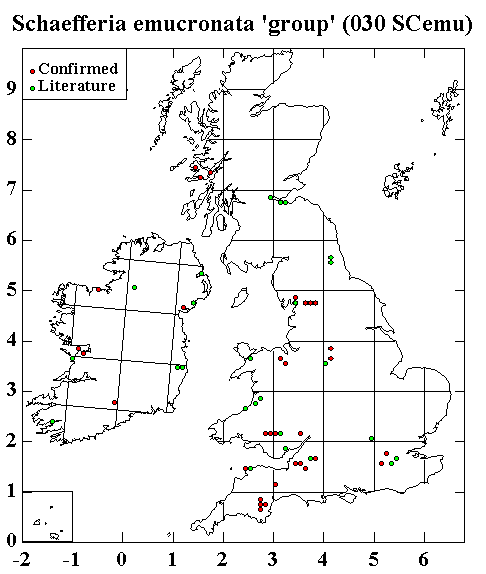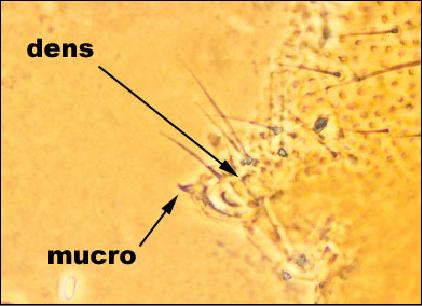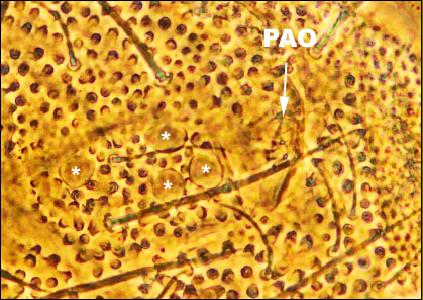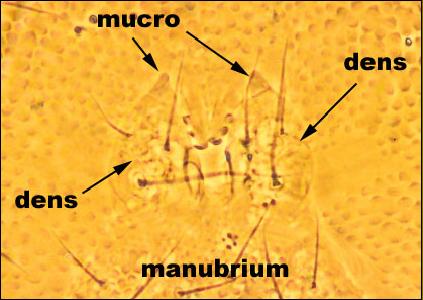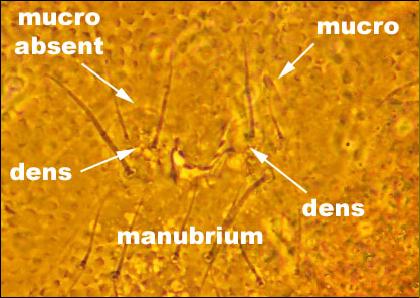|
The reason for placing all UK/Eire specimens of Schaefferia into a single group, the Schaefferia emucronata 'group' is the lack of stability of the characters used to separate the 'species'. The Schaefferia I have seen (some 60 specimens), mostly from caves but some from soil and humus outside caves, have 3+3, 3+4 or 4+4 ocelli (Fig. 1-3) (a specimen labelled Schaefferia sexoculata in the NHML collection has 4+4 ocelli!). All specimens have large anal spines (Fig. 4) and the empodium of the foot has a distinct lamella (Fig. 5). The mucro is absent from some specimens and present in others (Fig. 6, 7), but is occasionally present on one dens but not the other in the same specimen (Fig. 8). The most sensible course would seem to be to use the earliest name Schaefferia emucronata Absolon, 1900 even though calling a specimen with a mucro 'emucronata' is an odd thing to do.
Specimens from UK/Eire included in this group are Schaefferia emucronata, Schaefferia lindbergi, Schaefferia pouadensis, Schaefferia sexoculata and Schaefferia willemi (and its synonyms cavernicola, longispina and octoculata). The publication of Thibaud et al. (2004) gives species status to Schaefferia emucronata, Schaefferia lindbergi, Schaefferia pouadensis, Schaefferia sexoculata and Schaefferia willemi. However in UK/Eire specimens, there is so much variation between individuals within populations of Schaefferia from the same localities that it is impossible to reliably use their key to separate the taxa. Further work is required on inter-and intra-specific variation in UK/Eire material to determine the species boundaries.
Back to main page
|
|
